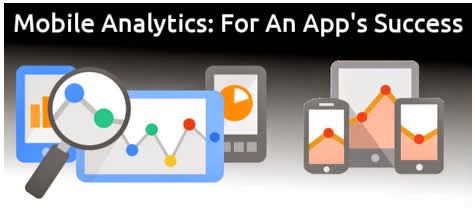With more
and more businesses investing in mobile app development, apps can today be used
as a medium to assess user experience. The performance and usage of mobile apps
therefore needs to be constantly monitored to meet consumer expectations. In
addition to Google Analytics, we now have a variety of paid tools like Adobe
Analytics, Localytics, and Playtomic etc. This article looks at how Analytics
play an important role in determining the success of your app and how you can
leverage them to increase app visibility.
What can Analytics do for your mobile app?
Check the Actual Usage of Your Mobile App:
Downloads alone are not the right indicator of your app’s reach. It is important to know if your app is actually being used by customers. This is where analytic tools come in, as they help you analyse usage, the nature of usage as well as the uninstall rate. This data helps you engage users, and improve downloads in your target market.
Optimize the Mobile app marketing strategy
You choose the features of your app based on the latest trends. But there could always be some features that need to be improved upon for better UX. Mobile app analytics help you identify those features (that help your app become more popular). Analytics also help identify the bottlenecks that stop a user from downloading it. This can greatly aid you in your app marketing strategy.
Identify the Features that Keep the Users Engaged
As a business you need to know what features or functionalities will have a great impact on users. Analytics help you in identifying the strengths and weaknesses of your app, so that you can explore options to deliver improved user experience.
Keep Track of Your Competitors
Market data provided by analytics tools make it easier for the end-user to know the performance of similar applications in the app store (in terms of number of downloads, price, etc). A business can further analyze the market data to identify the positives and negatives of its competitors' marketing strategies. This way it can beat competition by capitalizing on where its competitors fail.
Calculating Return on Your Investment (ROI)
Every enterprise needs to track the ROI, and explore options to garner higher returns. App analytic tools help you make informed decisions based on a finer reading of your mobile application's performance. Apart from measuring the performance of your app, analytics data can also be used to efficiently manage the application.
What can Analytics do for your mobile app?
Check the Actual Usage of Your Mobile App:
Downloads alone are not the right indicator of your app’s reach. It is important to know if your app is actually being used by customers. This is where analytic tools come in, as they help you analyse usage, the nature of usage as well as the uninstall rate. This data helps you engage users, and improve downloads in your target market.
Optimize the Mobile app marketing strategy
You choose the features of your app based on the latest trends. But there could always be some features that need to be improved upon for better UX. Mobile app analytics help you identify those features (that help your app become more popular). Analytics also help identify the bottlenecks that stop a user from downloading it. This can greatly aid you in your app marketing strategy.
Identify the Features that Keep the Users Engaged
As a business you need to know what features or functionalities will have a great impact on users. Analytics help you in identifying the strengths and weaknesses of your app, so that you can explore options to deliver improved user experience.
Keep Track of Your Competitors
Market data provided by analytics tools make it easier for the end-user to know the performance of similar applications in the app store (in terms of number of downloads, price, etc). A business can further analyze the market data to identify the positives and negatives of its competitors' marketing strategies. This way it can beat competition by capitalizing on where its competitors fail.
Calculating Return on Your Investment (ROI)
Every enterprise needs to track the ROI, and explore options to garner higher returns. App analytic tools help you make informed decisions based on a finer reading of your mobile application's performance. Apart from measuring the performance of your app, analytics data can also be used to efficiently manage the application.













